Artists Anne Libby, Elise McMahon, and Sophie Stone spent springtime nurturing creative growth and awareness in a small glass box. The group inhabited a steel New York City newsstand and stocked the essentials like umbrellas for the unforgiving rain, bottled H20, crush-worthy lighters, munchies and plenty of reading material. If you haven’t stopped by, grab some boba and unwind at the intersection of Bowery and Canal Street. Petrella’s Imports will close up shop Sunday, June 30th. Twin asked about their blooming future.
How did you ladies all meet?
The three of us met in school at RISD.
Tell us about conceiving Petrella’s Imports.
When we thought about newsstands in the age of information, they seemed like odd points of distribution. Thus, Petrella‘s Imports is conceived as a physical outpost in a digital culture, at a time when the originary purpose of the newsstand as ‘source of information’ wanes. Our intention has been to assemble a large number of creative collaborators in order to offer a surrogate to the inventory of items normally found. Like a site, the newsstand is updated daily with new content, much of which threads through the digital realm.
How has your project progressed since?
As a point of distribution within the public space of New York City, the ‘newsstand’ is a form that we continue to be interested in examining and reconstituting. Since opening, we’ve embarked on “Live Stream”, a serial video project at PetrellasImports.com that documents and fictionalizes the newsstand’s reified integration into New York City street life. It’s partially a product of what we see and hear from the newsstand.
Typically, women are not found working in a newsstands. How did this reality influence the success of Petrella’s ?
The operation of a newsstand by women is certainly unique . Taking the broader context of street-facing city spaces, the presence of women is nearly non-existent. We’re interested in altering the expected constitution of these establishments.
Petrella’s Imports is full of riches – the stand is so carefully curated. Who did you collaborate with?
Artists from all over contributed to the collaboration that represents the inventory of the newsstand. The inventory includes artist-made magazines and newspapers as well as postcards, prepackaged food, umbrellas and cigarettes.
You encourage and engage individuals to take part in a dialogue of great social change. What has the overall reaction been like?
All of the contributors have been excited about the idea of a street-facing point of exhibition. It gave a lot of people an opportunity to reposition their work within a different economy for a different audience. We’ve been thrilled with the response from passersby who’ve come across something unusual within the patterns of everyday life.
How did you balance the intimacy of experiencing an artist’s work in a very public environment?
Art consumption in traditional contexts enjoys a slightly longer gestation than the quick, one-minute shopping stop on the sidewalk. We hope to suggest browsing and long-form consumption as a way of realigning public space with something closer to respite or philosophical recalibration.
Did you face any challenges working within the constraints of a uniform glass structure?
The particular structures around the city are recent architectural solutions, more vehicles for advertising than anything else, raking in huge amounts of money for the city. Constraint and economics were a big part of our interest, so working right up next to these civic barriers was important to the project.
Will you continue to work within New York public space?
We’ve been in touch with a handful of institutions. None have been quite right yet, and we’re considering other public venues that would further contextualise our ends in increasingly trenchant ways. We’re continuing to take on projects that revolve around the intersection of individuals and their physical (and newly metaphysical) landscapes. As the definition of the public realm continues to change, we make blanket assumptions about ‘access’, ‘universality’ and ‘parity’ within spaces like the web. At the same time we can see a constriction, or a streamlining, of said values.
What’s up next for the group?
At the end of July we will have a web project and a show at Suzanne Geiss Company. It’s a gallery with a storefront location on Grand street and represents an opportunity for us to explore alternate definitions of public space, store-fronting and the distribution of information.
A wise woman?
Mierle Laderman Ukeles says many wise things that have informed our own belief system.
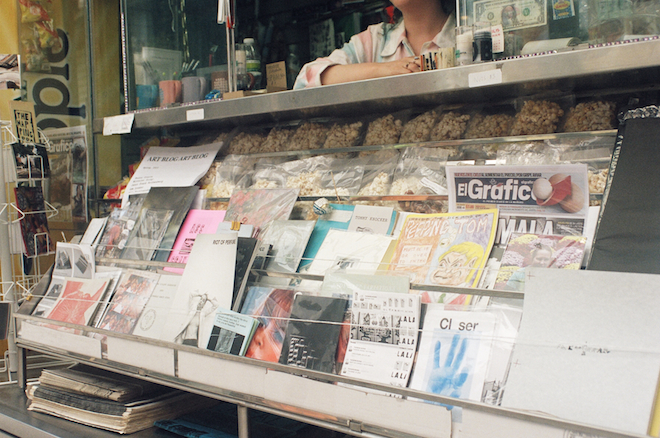
Work by artists Gretta Johnson, Laura Hunt, Maria Salas, and PJ Rountree among many others
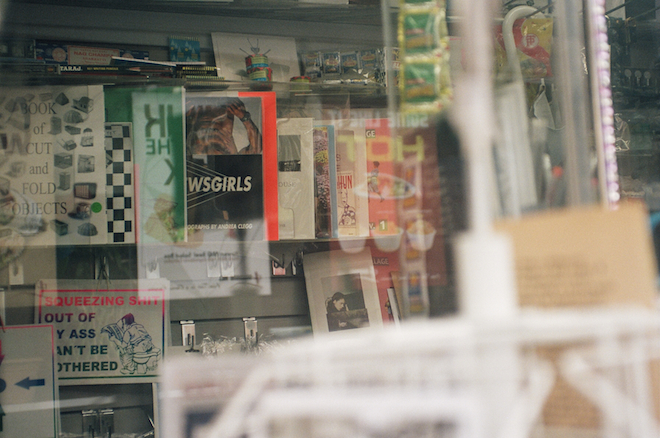
Inside the newsstand, a continued selection of artist publications and editions

Anne Libby’s I <3 NY plastic bag water bottles and postcards by artists
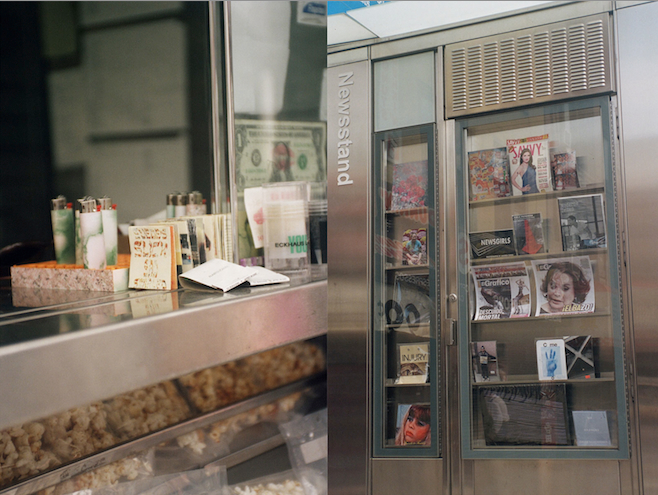
Elise Mcmahon’s lighters, Maggie Lee’s Suede’s Slick Sad Swirled, Kevin Zucker’s NYC restaurant matchbooks and Eckhaus Latta and K-hole Projects Brad and You deodorant. The door to the newsstand is also exhibition space
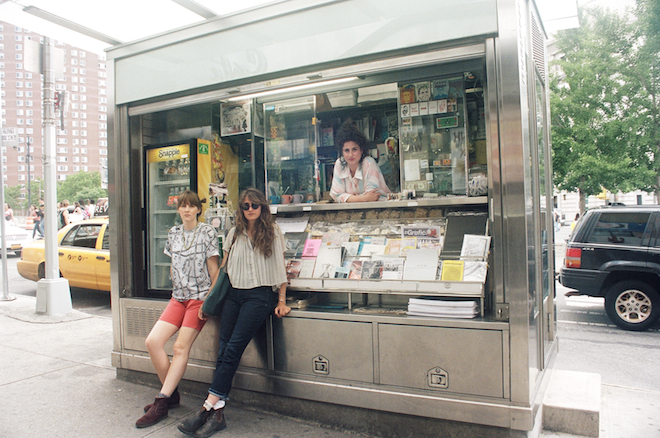

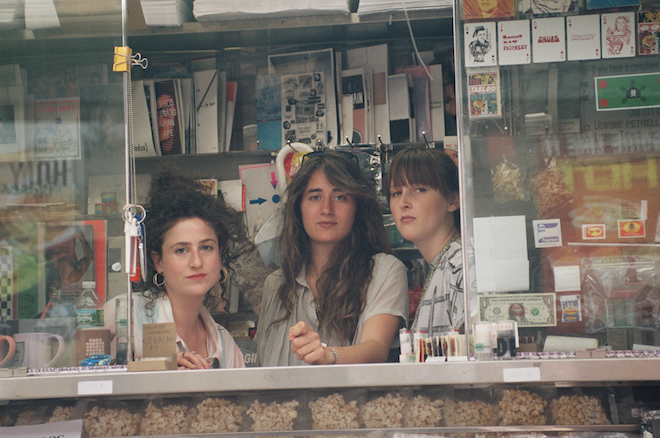
 PREVIOUS
PREVIOUS

 Twitter
Twitter
 Tumblr
Tumblr
 YouTube
YouTube
 Facebook
Facebook
 Instagram
Instagram
